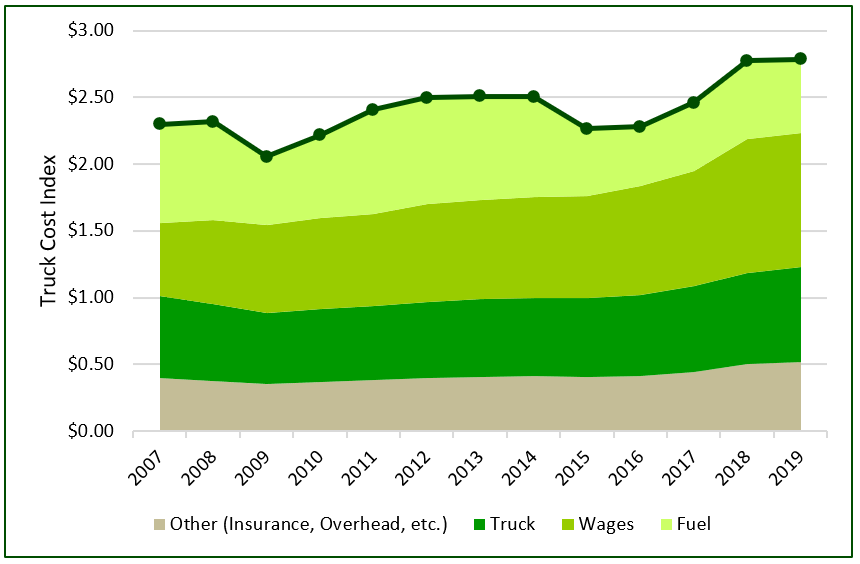Over the last month, we fielded a number of questions from colleagues and clients about trucking costs. Multiple questions from different directions on the same topic usually highlight a problem. Trucking is hardly a new hot topic. Over the past 5 years or so, it has been one of the top risks for the wood supply chain. The retirement of the baby boomers threatens all industries with a dip in talented personnel. Logging and trucking are no different. In logging, though, there are no barriers to entry. A young person curious about running a skidder needs only find an owner willing to give them a shot. Trucking requires a minimum age, a fairly expensive certification, and often multiple years of experience before any logger would be allowed to hire a new driver under their insurance. So a dip in truck drivers becomes more challenging to fill than a dip in some other jobs.
While none of this is news, knowing that a problem was brewing and watching that problem boil over are two different things. The pandemic may be the unwanted fuel for the fire beneath this cauldron. Through the end of 2020, truck driver wages spiked nationally, with Q4 wages up 10%, their greatest single-quarter gain in at least 15 years. Since then a lot of companies have announced further pay increases. It is safe to say the competition for drivers is heating up.
Driver wages are the largest component of trucking costs and have been steadily increasing for years, but cost pressure has been growing everywhere (Figure). Purchase prices for trucks are on the rise. The pandemic did not help here either. A number of large trucking firms halted their growth in 2019 as freight volumes eased from a torrid 2018. The slowdown in manufacturing that hampered many industries in 2020 impacted truck manufacturers as well and while used truck prices dropped about 7% in 2020 according to ACT Research, they have rocketed up by over 30% in the first half of 2021.

Fuel prices remain the most volatile component of truck costs. The 2020 drop in fuel prices was a welcome relief (a rare piece of good news in a challenging year). The restart of the economy erased that happy news, though, as diesel prices are up 27% since December.
Aside from double-digit growth in the three largest cost centers, there are plenty of other financial headaches for truck owners. Insurance remains an impediment, despite representing a relatively small proportion of total truck costs. Over the last four years, insurance costs for small fleets (owners with less than 25 trucks are considered small) nearly doubled. Combined, this creates a painful financial pinch in a sector of the supply chain that struggles to find profit in the best of times.
For further analysis on the wood supply chain, subscribe to the Forisk Research Quarterly (FRQ). Email hclark@forisk.com for pricing information and to place an order.

Leave a Reply